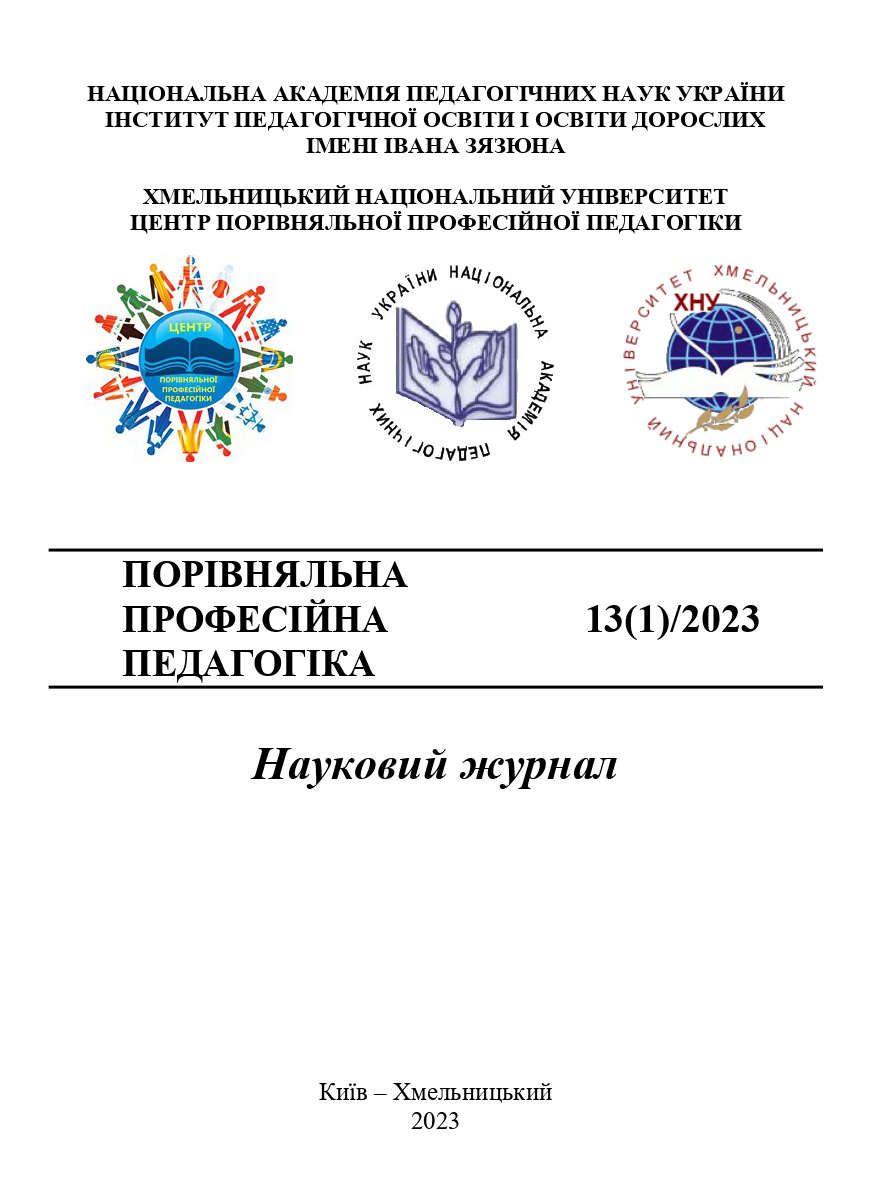INTRODUCING ACTIVE LANGUAGE LEARNING TECHNIQUES INTO A VIRTUAL CLASSROOM: REFLECTION ON THE AMERICAN PRACTICES
DOI:
https://doi.org/10.31891/2308-4081/2023-13(1)-6Keywords:
active language learning, virtual classroom, active learning technique / strategy, online learning platforms / tools, assessmentAbstract
The paper considers American active learning (AL) practices that can be used in a virtual language learning classroom in Ukrainian higher education institutions to encourage students’ engagement, collaboration and evaluate their performance. The authors study the concept of AL, its main techniques and peculiarities of application; outline technologies and tools that have the potential to influence active language learning (ALL) in a virtual classroom; define the techniques that can be used to promote ALL in a virtual classroom (polls and surveys, discussions and forums, case studies, interactive lectures, simulations and games, collaborative projects, personalized learning).
Particular attention is paid to online AL strategies applied by Columbia University and Cornell University (USA). Here belong Online Polling, Think-Pair-Share, a Minute Paper, Small Group Discussion and Short Student Presentation strategies, each of them requiring appropriate online learning platforms, services and tools for its effective implementation. They include Zoom videoconferencing platform with its breakout rooms, polling, screen sharing, whiteboard and nonverbal feedback features, Poll Everywhere, CourseWorks Quiz, Canvas Quiz features, collaborative online tools such as LionMail (Google) Docs, Sheets, Slides, etc. Another important issue considered in the paper is assessment and evaluation of students’ progress in AL.
Assessment techniques used in Cornell University comprise Grading Rubrics, plagiarism detection, self-assessment, peer assessment, surveys and classroom polling. In this context, Canvas Rubrics, Canvas Assignments, FeedbackFruits, Gradescope, Qualtrics, Turnitin can be used as effective assessment tools. The authors conclude that the main advantages of ALL are its flexibility, collaborative learning opportunities, customization options, access to online resources while its challenges involve lack of face-to-face interaction, technical difficulties, high pricing plans for some online services and tools, variety of distractions such as social media, email, or other online activities, and limited learning environment.
References
Adkins, J. K. (2018). Active learning and formative assessment in a user-centered design course. Information Systems Education Journal, 16(4), 34-40. Retrieved from https://eric.ed.gov/?id=EJ1187945
Bates, A. W. (2022). Teaching in a digital age: Guidelines for designing teaching and learning (3rd ed.). Tony Bates Associates Ltd. Retrieved from https://open.umn.edu/opentextbooks/textbooks/221
Brame, C. (2016). Active learning. Vanderbilt University Center for Teaching. Retrieved from https://cft.vanderbilt.edu/active-learning/
Bransford, J. D., Brown, A. L., &Cocking, R. R. (Eds.). (1999). How people learn: Brain, mind, experience, and school. National Academy Press.
Cavanagh, M. (2011). Students’ experiences of active engagement through cooperative learning activities in lectures. Active Learning in Higher Education, 12(1), 23–33.
Columbia University in the City of New York. (n. d.). Active learning for your online classroom: five strategies using Zoom. Retrieved from https://ctl.columbia./ edu/resources-and-technology/teaching-with-technology/teaching-online/active-learning/
Cooper, J. L., MacGregor, J., Smith, K. A., & Robinson, P. (2000). Implementing small-group instruction: Insights from successful practitioners. New Directions for Teaching & Learning, 2000 (81), 63-76.
Cornell University. (n. d.). Active learning. Retrieved from https://teaching./ cornell.edu/teaching-resources/active-collaborative-learning/active-learning
Hyun, J., Ediger, R., &Lee, D. (2017). Students’ satisfaction on their learning process in active learning and traditional classrooms. International Journal of Teaching and Learning in Higher Education, 29 (1), 108–118.
Lumpkin, A. L., Achen, R. M., & Dodd, R. K. (2015). Student perceptions of active learning. College Student Journal, 49 (1), 121–133.
Mercat, Ch. (2022). Introduction to active learning techniques. Open Education Studies, 4 (1), 161–172.


